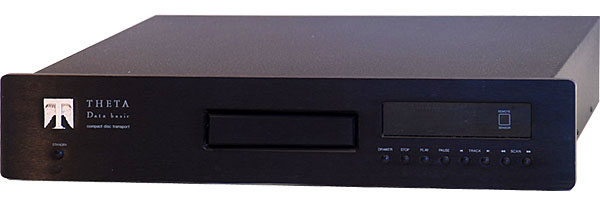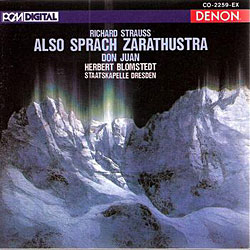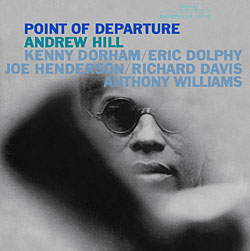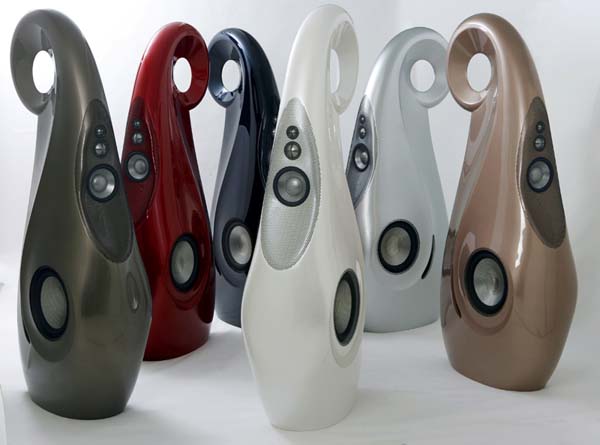LATEST ADDITIONS
Stereophile's Products of 2010
Pioneer Elite TZ-9 loudspeaker
 Although, historically, Asian high-performance loudspeakers have not had much impact in the US (with the possible exception of the Yamaha NS1000), it is obvious from recent events that that situation might change. Some Japanese manufacturers are determinedly attempting in 1989 to scale the high-end heights. Onkyo, for example, launched an entire range under the Precise brandname, designed by that most idiosyncratic of talented Californian engineers, Keith Johnson, while Yamaha has licensed the Swedish ACE-Bass technology to produce loudspeakers that extend amazingly low in the bass for their size. But it is Pioneer, already well-ensconced in the US pro market with their TAD (Technical Audio Devices) drive-units and monitors, who have made perhaps the biggest techno-splash with their "Elite-TZ" speakers. These feature both high-tech drive-units and a novel (if not entirely new) method of minimizing enclosure vibrations.
Although, historically, Asian high-performance loudspeakers have not had much impact in the US (with the possible exception of the Yamaha NS1000), it is obvious from recent events that that situation might change. Some Japanese manufacturers are determinedly attempting in 1989 to scale the high-end heights. Onkyo, for example, launched an entire range under the Precise brandname, designed by that most idiosyncratic of talented Californian engineers, Keith Johnson, while Yamaha has licensed the Swedish ACE-Bass technology to produce loudspeakers that extend amazingly low in the bass for their size. But it is Pioneer, already well-ensconced in the US pro market with their TAD (Technical Audio Devices) drive-units and monitors, who have made perhaps the biggest techno-splash with their "Elite-TZ" speakers. These feature both high-tech drive-units and a novel (if not entirely new) method of minimizing enclosure vibrations.
The TZ-9 is the top of Pioneer's new line, and costs a cool $4000/pair, placing it firmly in the high-end category. But for that outlay, the TZ-9 owner acquires a largish and quite handsome speaker, finished in a rather orange-colored oak veneer and standing some 4' high. Both tweeter and midrange units feature domes fabricated from an amorphous form of carbon termed by Pioneer "Ceramic Graphite," which is said to have 10 times the bending stiffness and two times the internal loss or self-damping of an equivalent titanium dome. The practical result should be accurate pistonic motion in each unit's passband, with a better-damped HF resonance than a metal dome. In practice, these Ceramic Graphite diaphragms can be quite brittle. Despite the presence of protective wire grilles over the mid- and high-frequency units, the first pair of TZ-9s we received had had the midrange domes shattered, due to inadequate early packaging.
Theta Data Basic CD transport

It seems to me that it should be possible to make a perfectly jitter-free CD transport without resorting to elaborate, expensive mechanical structures. This idealized transport would ignore all mechanical considerations of disc playbackvibration damping and isolation, for exampleand simply put a jitter-free electrical driver at the transport output. If such a circuit could be made, it wouldn't care about how bad the signal recovered from the disc was (provided the recovered data were error-free). The circuit would just output a perfect, jitter-free S/PDIF signal. The result would be the sound quality of the $8500 Mark Levinson No.31 Reference CD transport in $200 machines. Such a scheme would provide an electrical solution to what has been considered largely a mechanical problem.
But back in the real world there's no doubt that attention to mechanical aspects of transport design affects sound quality. Examples abound: listening to Nakamichi's 1000 CD transport with its Acoustic Isolation door open and closed; playing the Mark Levinson No.31 with the top open; and putting any transport on isolation platforms or feet are only a few of the dozens of experiences I have had that suggest that mechanical design is of utmost importance.
Recordings of June 1989: Strauss: Also Sprach Zarathustra
 These are two very fine discs. Both convey to perfection the full weight of Richard Strauss's opulent orchestration for Zarathustra without the slightest hint of distortion, despite the huge dynamic range both employ. Both have the measure of the venues they are recorded in: Denon's Lukaskirche actually gives the impression of an acoustically superior concert hall, and it is astonishing to discover from the insert notes that the well tuned-in and integrated organ has been post-synchronized from the Schauspielhaus, Berlin.
These are two very fine discs. Both convey to perfection the full weight of Richard Strauss's opulent orchestration for Zarathustra without the slightest hint of distortion, despite the huge dynamic range both employ. Both have the measure of the venues they are recorded in: Denon's Lukaskirche actually gives the impression of an acoustically superior concert hall, and it is astonishing to discover from the insert notes that the well tuned-in and integrated organ has been post-synchronized from the Schauspielhaus, Berlin.
Telarc's disc is their first of the Vienna Philharmonic, and their first from the Musikvereinsaal. It can hardly be faulted, except perhaps for the consistent richness of its more tonally refulgent soundsome may find this oppressive. But it does reflect perfectly Previn's more emotionally charged, almost maniacal response to this score. It is the kind of music he excels in; the meditative, almost ponderous fugue giving way to the near hysteria of "The Convalescent," and reflecting real joy at the climax of the "Dance Song." Previn is living these colorful swings of emotion, and if he makes great demands of the score in doing so (just as Blomstedt does), then his intuitive balance renders this all the more convincing.
Anticipation: Jolida’s FX10 Integrated Amplifier
San Francisco Symphony's Mahler Coming on Vinyl
John Marks and Vivid Audio at Overture AV
Andrew Hill’s Point of Departure on 45 rpm vinyl
 Music Matters Jazz—the L.A.-based audiophile label that reissues classic Blue Note titles, each on twin slabs of thick, quiet vinyl, mastered at 45 rpm and eased into gorgeous gatefold packages—keeps churning them out.
Music Matters Jazz—the L.A.-based audiophile label that reissues classic Blue Note titles, each on twin slabs of thick, quiet vinyl, mastered at 45 rpm and eased into gorgeous gatefold packages—keeps churning them out.
One of their latest, and greatest, is Andrew Hill’s Point of Departure, a jaw-dropper from 1964 that sounds as fresh as tomorrow.
Hill, 33 at the time (he died in 2007, active till the end), was a precisely adventurous pianist and one of the most inventive composers of that transition era, pushing metric rhythms and chord-based harmonies right up to the edge dividing structure from freedom (he received informal lessons from Hindemith in his youth). Every player in his band—Eric Dolphy on reeds, Joe Henderson on tenor sax, Kenny Dorham on trumpet, Richard Davis on bass, Tony Williams on drums—was top-notch and hitting their peaks.
How often do you listen to headphones?
Vote to see the results and then set up an account to leave a comment about your choice.






